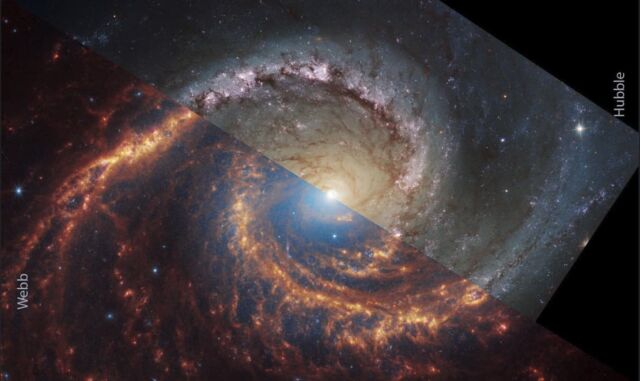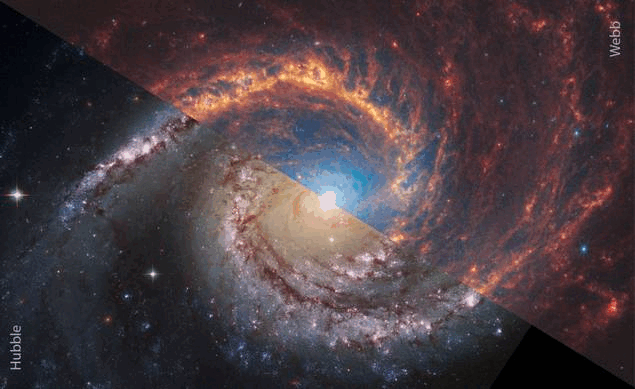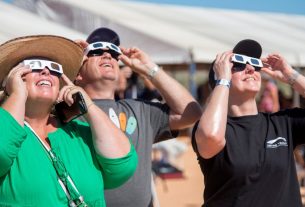Credit: NASA, ESA, CSA, STScI, J. Lee (STScI), T. Williams (Oxford), R. Chandar (UToledo), D. Calzetti (UMass), PHANGS Team
NGC 1566 is a stunning spiral galaxy, one of the most captivating sights in the night sky, in a composite image from Webb and Hubble.
This NGC 1566 galaxy image is unique because it’s a diagonal blend of two separate images: one captured by the Hubble Space Telescope in the upper left, and the other by the James Webb Space Telescope.
The Hubble image, taken in ultraviolet light, showcases vibrant blue stars and dark dust patterns along the galaxy’s elegant spiral arms. In contrast, the Webb image, captured in infrared light, reveals areas where the same dust emits more light than it absorbs.
 Credit: NASA, ESA, CSA, STScI, J. Lee (STScI), T. Williams (Oxford), R. Chandar (UToledo), D. Calzetti (UMass), PHANGS Team
Credit: NASA, ESA, CSA, STScI, J. Lee (STScI), T. Williams (Oxford), R. Chandar (UToledo), D. Calzetti (UMass), PHANGS Team
Blinking between the two images allows you to pinpoint the hottest stars, which shine brighter in ultraviolet light, and discern the difference between seeming space and the glow of infrared-emitting dust particles.
source APOD



